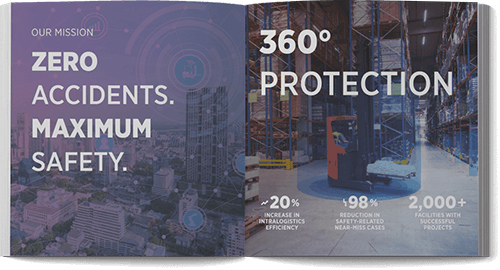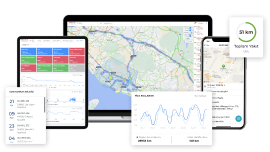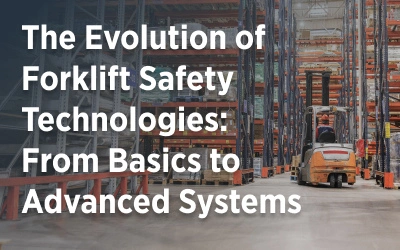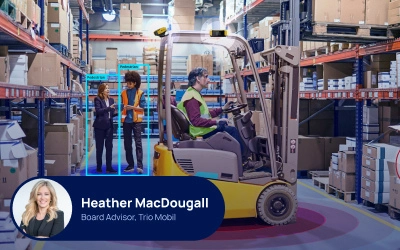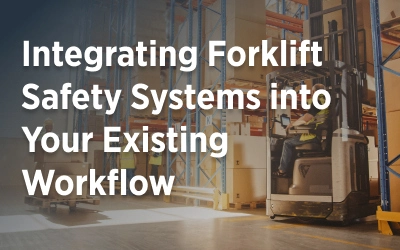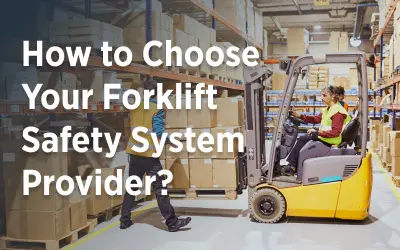Lone worker safety is essential to industrial workplace management, promoting the well-being of employees who operate independently. Our guide addresses this critical need and focuses on the most effective solutions: lone worker safety systems and devices.
This guide explores the risks, legal obligations, and innovative safety solutions tailored for the diverse environments where lone workers find themselves. From the legal frameworks set by OSHA to the latest technological advancements in lone worker safety monitoring, this comprehensive guide is an essential resource for employers and workers striving to create a safer, more compliant industrial workplace.
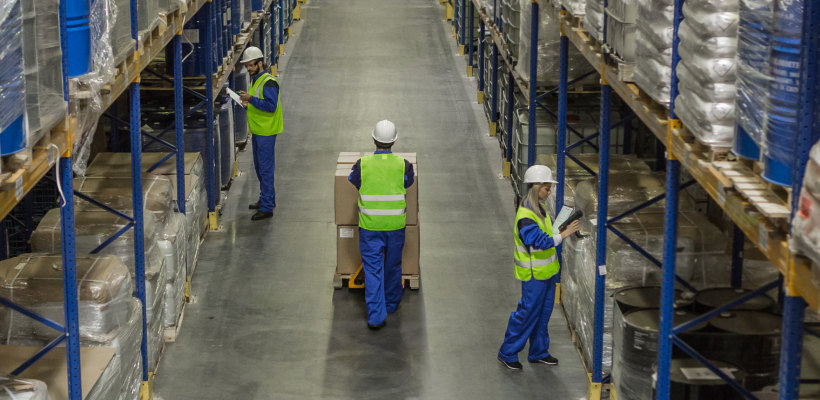
Understanding Lone Workers: Who Are They?
Lone workers perform their job functions in settings where they are physically separated from their colleagues or supervisors. This diverse group encompasses employees across various sectors: healthcare, agriculture, manufacturing, utilities, and construction. Understanding these workers' specific needs and challenges is essential in crafting effective safety strategies.

The Importance of Safety Measures for Lone Workers
The safety of lone workers is multifaceted, combining moral, legal, and operational concerns. These workers face unique risks due to their isolation, which can exacerbate the severity of accidents and emergencies. Comprehensive safety measures are vital not only for the well-being of the workers but also for helping to comply with legal standards and enhancing the overall workplace safety culture.
OSHA's regulations, particularly OSHA 1915.84, emphasize the necessity of accounting for each employee working alone through regular intervals and at the end of each work shift. This standard enhances the safety and health of lone workers through consistent monitoring and communication.

Common Hazards for Lone Workers
Lone workers are exposed to a spectrum of risks, including but not limited to physical injuries from accidents or equipment, health risks from prolonged exposure to hazardous materials, and potential security threats in secluded or unmonitored locations. A detailed understanding of these hazards is critical for developing effective prevention and response strategies.
The NSC's (National Safety Council) research "Using Lone Worker Monitoring Technology to Protect Workers" identifies the key benefits of introducing lone worker monitoring technologies in such environments. These include enabling two-way communication in areas without cell coverage, enhancing safety capabilities by detecting hazards like gas emissions or proximity to dangerous machinery, and increasing cost savings by streamlining communication processes.
Lone Worker Safety Policy: Legal and Compliance Aspects
Adherence to legal standards, particularly those set by organizations like OSHA, is crucial in safeguarding the health and safety of lone workers. In compliance with OSHA's General Duty Clause, employers must furnish a workplace free from recognized hazards that could cause serious harm or death. This involves establishing effective communication protocols, regularly updating risk assessments, and revising policies specific to lone workers' safety needs. Non-compliance can lead to significant legal implications and compromise worker safety.
Best Practices for Lone Worker Safety
Best practices for lone worker safety in industrial environments involve a holistic approach, combining rigorous risk assessments, comprehensive training, and implementing advanced safety systems and devices.
These practices are designed to mitigate lone workers' unique risks, safeguarding their protection and maintaining continuous communication with supervisors. By integrating these strategies, employers can significantly enhance their lone workers' safety, aiming for compliance with legal standards and the well-being of their workforce.
Risk Assessment
Conducting a thorough and continuous risk assessment is fundamental to lone worker safety. This process involves identifying and analyzing potential hazards that lone workers might encounter.
This assessment should consider the nature of the work, the environment, and the potential for isolation-related risks. By evaluating the likelihood and potential impact of these risks, employers can develop targeted strategies to mitigate them. This process is not static; it requires regular review and adaptation to account for changes in work practices, environments, and technology. Effective risk assessment is foundational in creating a safe working environment for lone workers, ensuring that preventive measures are relevant and robust.
Training and Awareness
Effective training and awareness programs are essential for a lone worker safety strategy. This involves educating workers on potential hazards and safety protocols and cultivating a culture of safety awareness.
Effective training equips lone workers with the knowledge and skills to identify risks, utilize safety equipment correctly, and respond appropriately in emergencies. Regular updates and drills reinforce this knowledge, ensuring that lone workers are always prepared and aware of the best practices to safeguard themselves while working independently. This proactive approach to training and awareness is essential in minimizing risks and enhancing overall workplace safety.
Effective Communication Systems
Effective communication systems are a cornerstone in enhancing lone worker safety, especially in industrial settings. These systems encompass more than just the ability to send and receive messages; they are vital in maintaining a lifeline between the lone worker and their support network, including supervisors and emergency services.
Key features include reliable connectivity, real-time location tracking, and emergency alert functionalities, even in remote or shielded areas. Incorporating these technologies aims to prevent lone workers from being truly isolated, providing both the worker and the employer with the reassurance that help is readily available if and when needed.
Lone Worker Safety Solutions
Lone worker safety solutions encompass a range of technologies and strategies specifically designed to protect employees working in isolation in industrial settings.
These solutions include advanced wearable devices with RTLS tracking and emergency alert functionalities, robust monitoring systems for real-time supervision, and specialized safety alarms.
Lone Worker Safety Devices
Lone worker safety devices are a pivotal aspect of safety in industrial workplaces. These devices, often wearable, are designed to monitor the safety and location of workers operating in isolation.
Key features include RTLS tracking for precise location monitoring, fall detection sensors to alert in case of accidents, and panic buttons for immediate emergency signals. These devices aim to enable lone workers to quickly and effectively communicate their status or call for help, offering an essential layer of security and reassurance in environments where immediate supervisor or colleague support might not be readily available.
Lone Worker Safety Monitoring
Lone worker safety monitoring in industrial environments is essential for enhancing the safety and well-being of employees working in isolation. This process involves advanced systems that provide real-time location tracking, automated check-ins, and immediate alerting mechanisms for unusual or potentially dangerous situations.
These monitoring systems are crucial in keeping lone workers connected to their support network, allowing for quick intervention in emergencies, and providing continuous oversight of their safety. By implementing effective lone worker monitoring, industries can significantly enhance the safety standards for their employees, providing a proactive approach to potential risks and emergencies.
Lone Worker Safety Alarm
Lone worker safety alarms are critical tools, especially in industrial settings where immediate assistance may not be readily available. These alarms are designed to be easily activated in emergencies, allowing workers to signal for help quickly. They can range from simple noise-making devices to sophisticated systems that automatically alert supervisors or emergency services when a worker is distressed.
Implementing such alarms is a proactive measure, aiming to give lone workers a reliable means to seek immediate assistance, enhancing their safety, and offering a vital response tool in critical situations.
Use Cases: Enhanced Lone Worker Safety
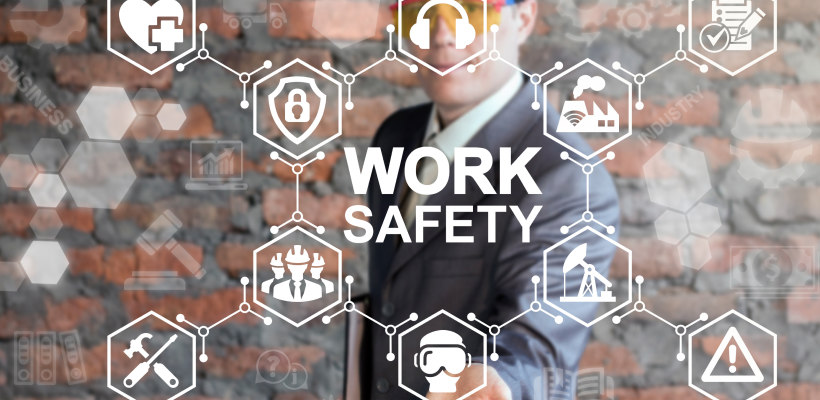
The use cases below highlight the critical importance of tailored safety solutions in safeguarding lone workers, who often face unique risks due to their isolated work environments. Each case provides insight into how specific safety technologies and strategies can significantly enhance lone worker protection in industrial settings.
Use Case #1 - Manufacturing Plants
Workers often operate heavy machinery or perform tasks in isolated facility sections in manufacturing environments. Here, safety devices with fall detection and emergency alert functionalities are indispensable. They provide immediate reporting of accidents and facilitate swift emergency responses, which is crucial in scenarios where every second counts.
Integrating these devices with environmental sensors can also alert workers to hazards like overheating equipment or chemical leaks, further enhancing their safety.
Use Case #2 - Chemical Processing Facilities
In chemical processing facilities, where exposure to hazardous substances is a significant risk, lone worker safety is paramount. Wearables that monitor environmental conditions like toxic gas levels or extreme temperature changes are critical. These devices offer real-time alerts, enabling quick evacuation or emergency assistance, significantly reducing the risk of injury or worse.
Integrating these wearables with a centralized safety management system allows for continuous monitoring and quicker organizational responses to potential incidents, enhancing safety for lone workers in these high-risk environments.
Use Case #3 - Oil and Gas Industry
The oil and gas industry often involves working in remote or challenging environments, such as offshore rigs or isolated drilling sites. In these settings, lone workers benefit immensely from RTLS tracking devices and advanced safety alarms. These tools not only aid in quickly locating workers during emergencies, such as equipment failures or sudden environmental hazards but aim to facilitate timely rescue and medical intervention.
Beyond emergency scenarios, these devices can be used for regular check-ins, maintaining constant communication between workers and their base operations. This ongoing connection is vital for responding to emergencies, routine monitoring, and supporting worker safety in these inherently dangerous locations.
Trio Mobil's Lone Worker Safety Solutions
At Trio Mobil, we specialize in providing comprehensive lone worker safety solutions. Our suite of products includes advanced RTLS tracking systems, innovative communication tools, and sophisticated alarm technologies. Each solution is carefully designed to meet the unique safety needs of lone workers in different industries, with their safety as a top priority.
